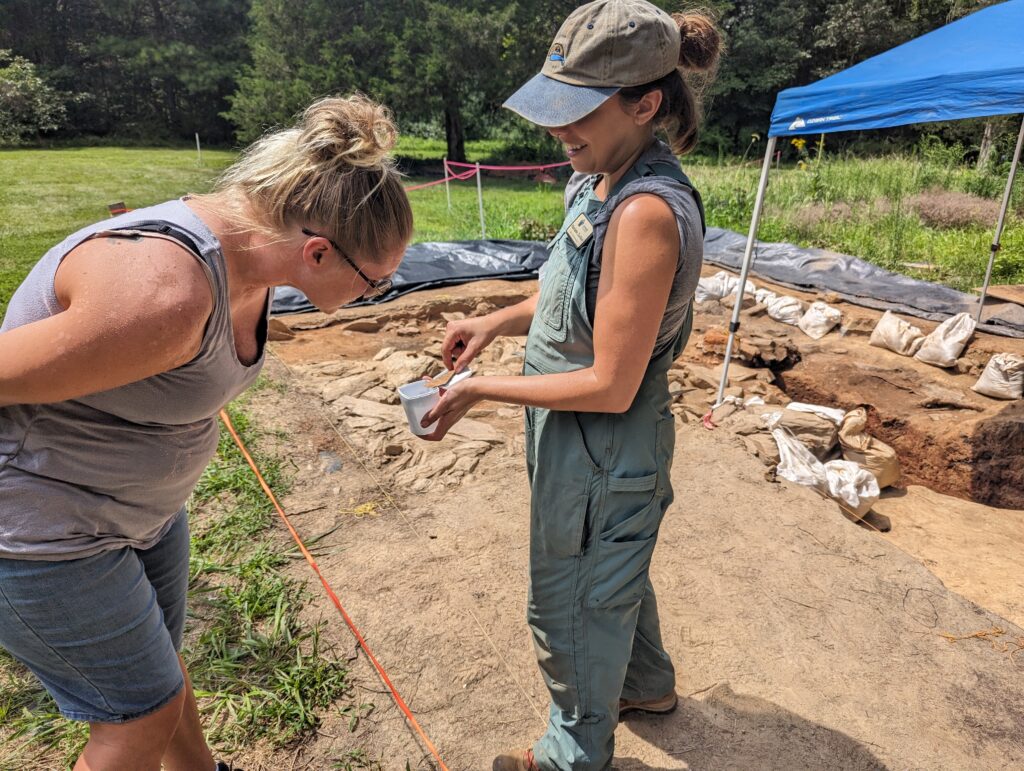Archaeology isn’t a goal. It’s a tool to bring people together and learn.”
Kelly Arford-Horne, Archaeologist & Site Director
Hitt Archaeology Center
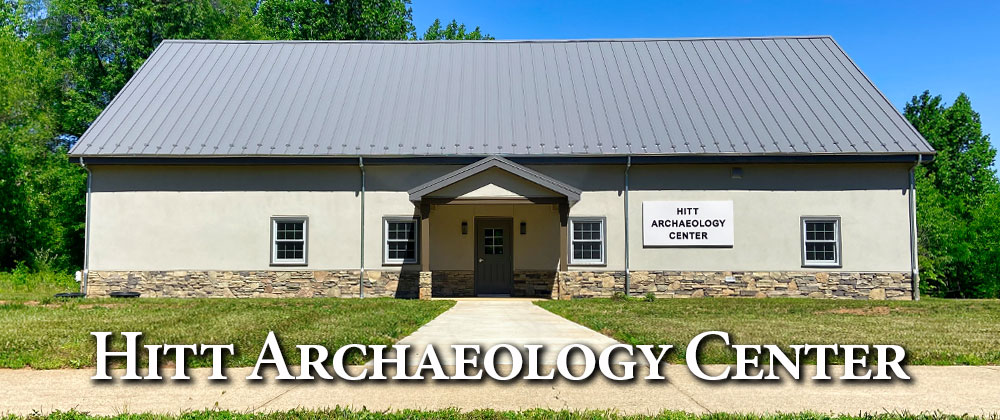 The Hitt Archaeology Center (HAC), located adjacent to the Visitor’s Center, houses laboratory, research, and storage facilities. HAC is central to the field work undertaken each summer and provides a space for study year-round. Archaeologists clean, catalog and store artifacts uncovered at all the sites Historic Germanna stewards.
The Hitt Archaeology Center (HAC), located adjacent to the Visitor’s Center, houses laboratory, research, and storage facilities. HAC is central to the field work undertaken each summer and provides a space for study year-round. Archaeologists clean, catalog and store artifacts uncovered at all the sites Historic Germanna stewards.
The Hitt Center also provides a place for the public, students, visiting scholars and researchers to learn more about the people and places of Historic Germanna.
Germanna Archaeology: Layers of Hidden Stories
Archaeology is at the center of Historic Germanna’s programs and ethos – inspiring curiosity and reimagining shared histories. Each year the program brings together visiting archaeologists throughout the country, dedicated students in training through a formal partnership with Virginia Commonwealth University (VCU), volunteers, students, and the general public. History is infused with new meaning and excitement for visitors across generations to see once-hidden artifacts recovered from the soil and decipher their purpose.
Germanna’s Archaeology program is led by a lean yet mighty and highly dedicated team that is working to cultivate the next generation of archaeologists through its formal teaching practice and methodology. Many do not realize that all of the work we do during the year is conducted by a small staff and assistance from interns and dedicated volunteers. Our team anticipates uncovering exciting findings on the landscape to inform the narratives better we are just beginning to understand. Additional financial resources are essential to grow our team and elevate Historic Germanna’s Archaeology program to a new level of impact and learning.
Germanna Archaeology
“With each newly discovered feature and artifact, Historic Germanna’s archaeological efforts are uncovering the layers of overlapping lives that made the world we see around us today.”
Dr. Eric Larsen, Director of Archaeology
Historic Germanna became the steward of a 62 acre archaeology site in 2013, having secured an easement for the perpetual preservation of the site. 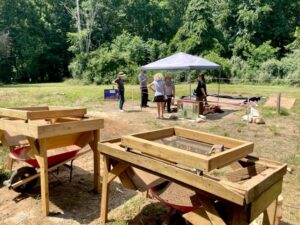
1714 Fort Germanna
Located on the northern end of Virginia’s piedmont region, Germanna originated as a fort community located on a bluff overlooking the south branch of the Rappahannock River (what we call today the Rapidan River). Lt. Governor Alexander Spotswood settled 42 men, women, and children (German-speaking immigrants from the area of current day Siegen, Germany) in a five-sided, palisaded fort he called Fort Germanna. Archaeologists from the University of Mary Washington (UMW) found remnants of what they believe to be the 1714 Fort walls while digging at the site in the early 1990s. Archaeologists today continue the search for more of the fort and artifacts associated with the lives of German immigrants.
Enchanted Castle
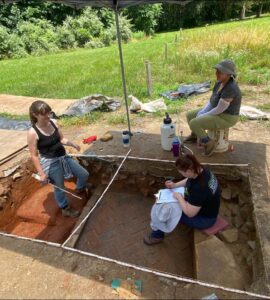 At the start of the 1720s, Spotswood began construction of a grand home at Germanna. Thanks to a visit from William Byrd II, it would come to be known as “the Enchanted Castle.” Archaeologists found the ruins of this significant brick and stone structure in the 1970s. UMW excavated the Enchanted Castle over a 10-year period. The current Germanna Archaeology program has pushed beyond the footprint of this substantial home and have found that Spotswood’s occupation of the site profoundly shaped the archaeology of Germanna.
At the start of the 1720s, Spotswood began construction of a grand home at Germanna. Thanks to a visit from William Byrd II, it would come to be known as “the Enchanted Castle.” Archaeologists found the ruins of this significant brick and stone structure in the 1970s. UMW excavated the Enchanted Castle over a 10-year period. The current Germanna Archaeology program has pushed beyond the footprint of this substantial home and have found that Spotswood’s occupation of the site profoundly shaped the archaeology of Germanna.
Spotsylvania Courthouse
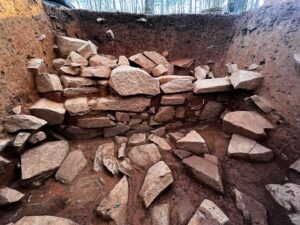 Over recent years, Germanna Archaeology has reached further out into the community of Germanna. In the woods to the west of the Enchanted Castle, archaeologists are examining the remains of what is believed to be the first Spotsylvania County Courthouse. The “village” included a courthouse, a church, jail, stocks, and pillory, as well as an ordinary to serve citizens on court days and travelers moving westward crossing the Rapidan via the natural ford or ferry.
Over recent years, Germanna Archaeology has reached further out into the community of Germanna. In the woods to the west of the Enchanted Castle, archaeologists are examining the remains of what is believed to be the first Spotsylvania County Courthouse. The “village” included a courthouse, a church, jail, stocks, and pillory, as well as an ordinary to serve citizens on court days and travelers moving westward crossing the Rapidan via the natural ford or ferry.
Gordon Farm and Plantation
Current archaeology finds remains from the Gordon occupation of the site. The Gordon family operated a plantation and farm at Germanna from the 1790s until the 1880s. Agricultural use of the land is evident at the current sites. Remnants of structures can be found in the woods to the east of the Enchanted Castle’s ruins.
In documenting the wider landscape through archaeology, a “community” of Germanna becomes clearer. Germanna became a place inhabited by immigrant German speakers, of indentured servants, and enslaved laborers. It is also a place long inhabited by Indigenous peoples long before the 1714 fort and continuing well after. Historic Germanna sites hold a myriad of stories of people who created and maintained this place over its long and significant history.
